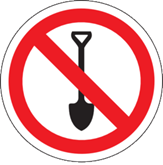This book is a superb introduction from Green Books to a tried and tested organic gardening technique perfected by Charles Dowding over 25 years of hands on experience.
A highly productive vegetable garden that involves no digging, written by a man with no formal horticultural training, and organic to boot? You may be permitted a certain cynicism.
However if that cynicism stops you from reading this book then you will have missed out on a treasure.
Charles Dowding is no armchair theorist, he produces weekly vegetable boxes, salad bags, supplies restaurants and runs courses all from an acre of intensively farmed land in Somerset.
His approach is classically organic in that it is soil centred- it is no coincidence that the leading organic body is called the Soil Association. A good soil structure is as important to a garden as a good foundation is to a building. Dowding argues that soil can be more harmed than helped through human digging. That doesn’t mean to say that the soil is not dug, just not by human hands. Back in 1828 Charles Darwin in his book, “The Formation of Vegetable Mould through the Action of Worms, with Observation of their Habits”, noted that a healthy pasture has been 25 and 50 mm of topsoil added every year through the casts of earthworms. Dowding uses these natural workers to do his hard work, by adding 25-50 mm of well rotted manure or good compost to the surface of his plots- within three months this nutritious mulch is pulled into the body of the soil by the worms.
The second key to success is never ever walk on the soil, thus avoiding any opportunity to compact the soil- the worms ,with a good supply of nitrogen rich manure or compost, produce a light, crumbly humus rich soil, the perfect base for vegetables. Walking or applying weight to the surface compacts the soil, making it heavy and dense- difficult for roots to penetrate.
A raised bedding system is therefore ideal, beds no more than a metre wide with clear paths on either side allow for easy access, the fact that they are raised makes them less back stretching for planting and of course weeding. It also means that the system works for small urban gardens as well as those off us lucky enough to have large rural plots.
Like all organic soil orientated approaches careful crop rotation and judicious timing is very important- crop rotation helps ensure that the soil doesn’t get worn out as well as ensuring that pests particularly keen on one type of vegetable do not get embedded in a certain patch.
Pest and insects can be the bane of organic growers lives, this spring a cabbage of mine was demolished in a night by a horde of caterpillars. However judicious and timely intervention- getting down on hands and knees and examining every single leaf of each plant quickly led to caterpillar carnage which saved the crop- indeed the first victim burst back into life. Slugs are kept at bay by reducing their habitats anywhere near the vegetable plot, and by sneaking into the garden after night falls with a torch and murderous intentions.
Judicious planting timing is also very important- getting an early start by growing seedlings in cold frames and greenhouses means that the very vulnerable first weeks of a plants life are over before they are introduced into the garden. If a slug or snail does get to them then they will start on the fading outer leaves which they are more than welcome to anyway.
If the book stopped there with the basic principals it would be a good read. However Dowding goes onto to look at which vegetables should be planted when, and for me very helpfully what should then be planted in the plot after the first crop has been harvested.
Dowding’s approach is an intensive cultivation technique with plants grown close together- helps conserve moisture in summer, and leaves little space for weeds- and one plant rapidly following another so the beds are inconstant use. The output from a small garden can be enormous and all year round.
Don’t be fooled that no dig means no work but the rewards are well worth it. Of course clearing the land and making the beds in the first place is an endeavour in itself- but a once off endeavour.
This book is now my first port of call when I am looking for a gardening solution. As a beginner and non-scientist, I found his style easy to understand packed with useful tips and coherent in that it took me from an uninformed start to considering quite complicated seasonal planning without loosing the plot or throwing my hands up in confused despair. The results at the Domaine de Montrouch are looking promising- if the wild boar don’t decide they fancy a salad dinner one night.

